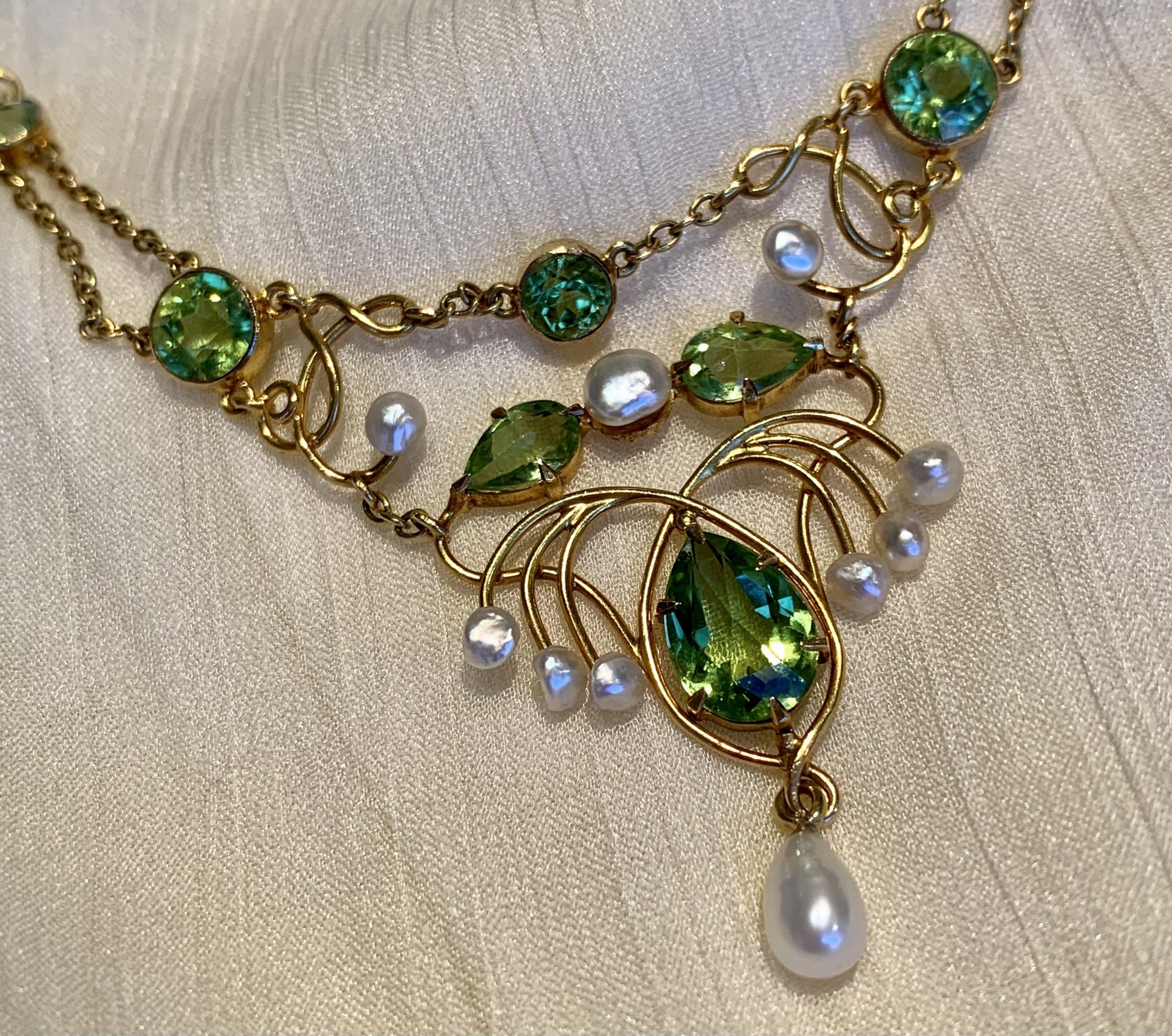As a purveyor of estate jewelry, we find that our most sought after pieces pre-date 1940 and go all the way back to the Georgian era, spanning 5 eras. It may be hard to distinguish one from the other if you haven’t been trained to do so but they each have distinct characteristics. Here we delve into each era and explain the design behind the time period. If you would like to view more examples of vintage pieces, visit our website and view our vintage collection.
Starting with the earliest, the Georgian era, (1714-1837)
The longest of all the eras, you will notice many styles that came from this period, including Baroque, Rococo and Neoclassical. Each of these suffered problems with the availability of precious metals and gemstones. Silver was easily the most popular metal for jewelry in early Georgian times. Later yellow gold was more widely used. The most common stones were foil-backed diamonds, topaz, and garnet. The cuts of these stones and diamonds were primitive and included table cuts, old mine cuts, point cuts, cushion cuts, single cuts and rose cuts. Due to the inability to cut stones precisely, it is very rare to find a Georgian piece with stones all the same size. Georgian jewelry is rare and in short supply because it was often melted down to create other pieces and simply because of the age it is difficult to find, especially in good condition.
Victorian Era (1837-1901)
As you may know, the Victorian Era is in reference to Queen Victoria of England. She had a significant impact on 19th century fashion and completely changed styles in textiles and jewelry. Jewelry from this time is much more easily available than the previous era. Gold and silver remained the most popular metals in Victorian Era engagement rings and other pieces. Stones popular during this time were garnets, amethyst, turquoise, sapphires, pearls, and diamonds. Motifs involving animals, especially snakes were very popular. When Prince Albert, Queen Victoria’s husband, died in 1861, she fell into a long depression. Queen Victoria spent much of the next four decades wearing black dresses and mourning jewelry, which she made very popular.

Victorian Era Jewelry. Left: mourning jewelry pin made of human hair. The yellow gold metal center illustrates the engraved scroll work of the time. Right: Victorian pearl and diamond bracelet in 18k yellow gold highlights the rose cut diamonds predominately used during the time.
Art Nouveau (1890-1910)
Art Nouveau meaning “New Art” was named after the 1895 opening of Siegfried Bing’s Parisian art gallery “Maison de l’Art Nouveau”, which housed artwork from this period. Styles took a free form approach with organic and flowery designs. English textile designer, William Morris, became prolific during this time with his flowery wall coverings that influenced all aspects of jewelry and textile design. Diamonds were used sparingly, while moonstone, amethyst, opal, amber, citrine, peridot, and freshwater pearls became common.
Edwardian Era (1901-1915)
In the time of the reign of England’s King Edward, this is the first era in which platinum was widely used in jewelry. Compared to past styles we begin to see more ornate and intricate designs. Techniques such as filigree and milgrain are also introduced during this period. Think feminine in predominately white: diamonds, pearls and white metals using gold and platinum. When a pop of color was used it was often that of a blue sapphire.
Art Deco Era (1920-1940)
The Art Deco period began after the first world war. Its name is derived from French architect, Le Corbusier’s expo, “Exposition Internationale des Arts Décoratifs et Industriels Modernes”. This period is also known as the age of the machine and the designs followed suit. Strong lines of symmetry were evident in the style and were seen on everything from buildings to cars to fashion. It was such a drastic change from the previous era’s swirls and nature inspired motif. Platinum was the primary metal of the Art Deco Era. The diamonds, sapphire, rubies, onyx, and emeralds helped assert the bold and prominent aesthetics of the time. Geometry is the key word for this era. We begin to see every distinct shape – triangles, squares, and many more – often with high contrast. This was done by creating a piece prominently in one color such as with diamonds and then adding a bold pop of color.

Art Deco compact. Art Deco bracelets demonstrating the strong geometric lines of the era and the bracelet on the right is a perfect example of the power of using the sapphire in contrast to the diamonds and platinum.
To view further examples of these 5 eras, visit our Vintage Jewelry, Vintage Engagement and Vintage Wedding Band Collections.
If you are interested in selling your vintage jewelry to Argo & Lehne, please view our “Sell Your Jewelry” page for further information and instructions. We would be happy to make you an offer.
Nearly half of our store’s inventory is fine vintage jewelry in impeccable condition. We also restore many vintage family heirloom pieces due to our superior craftsmanship and knowledge of vintage jewelry. To learn more about restoration click here.







